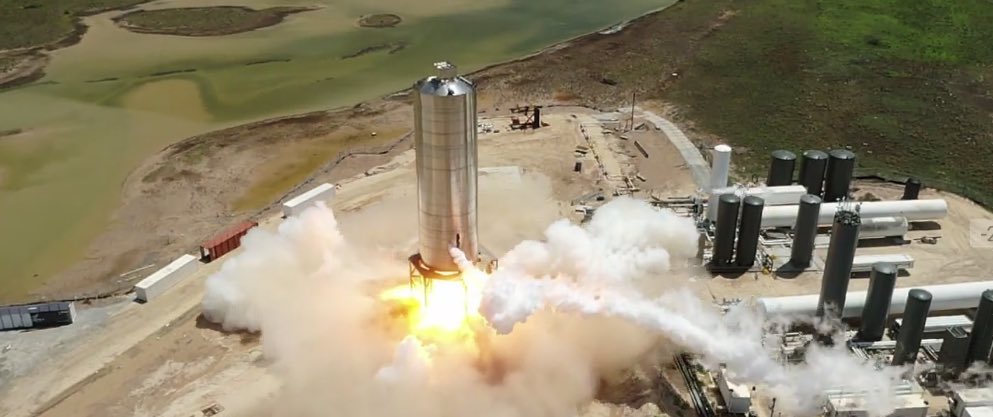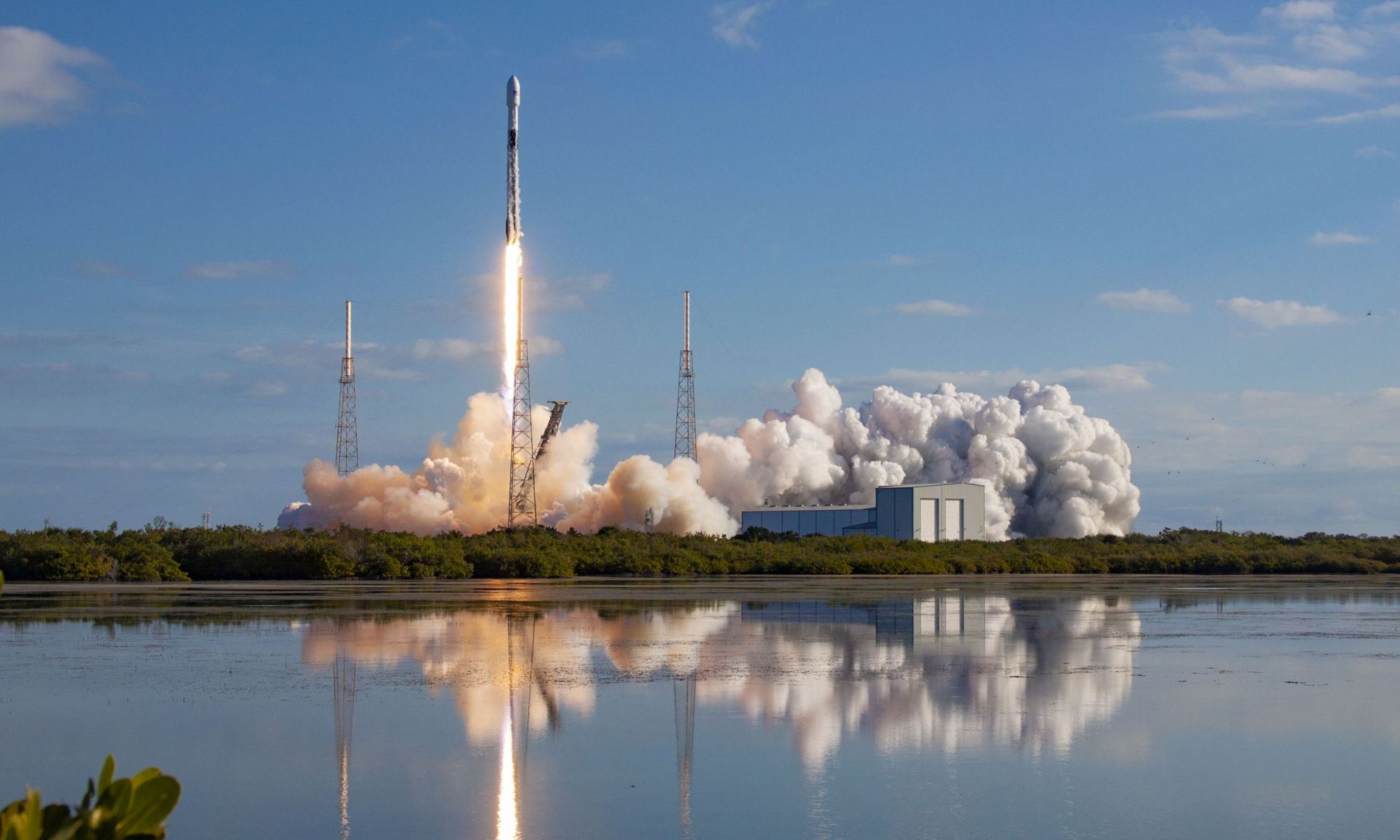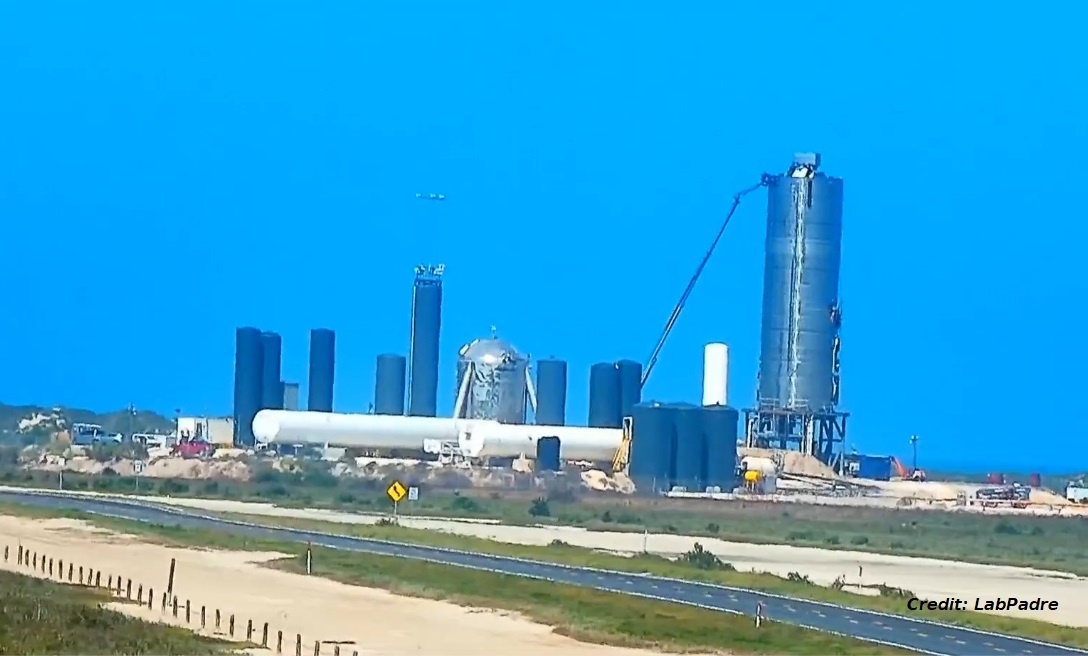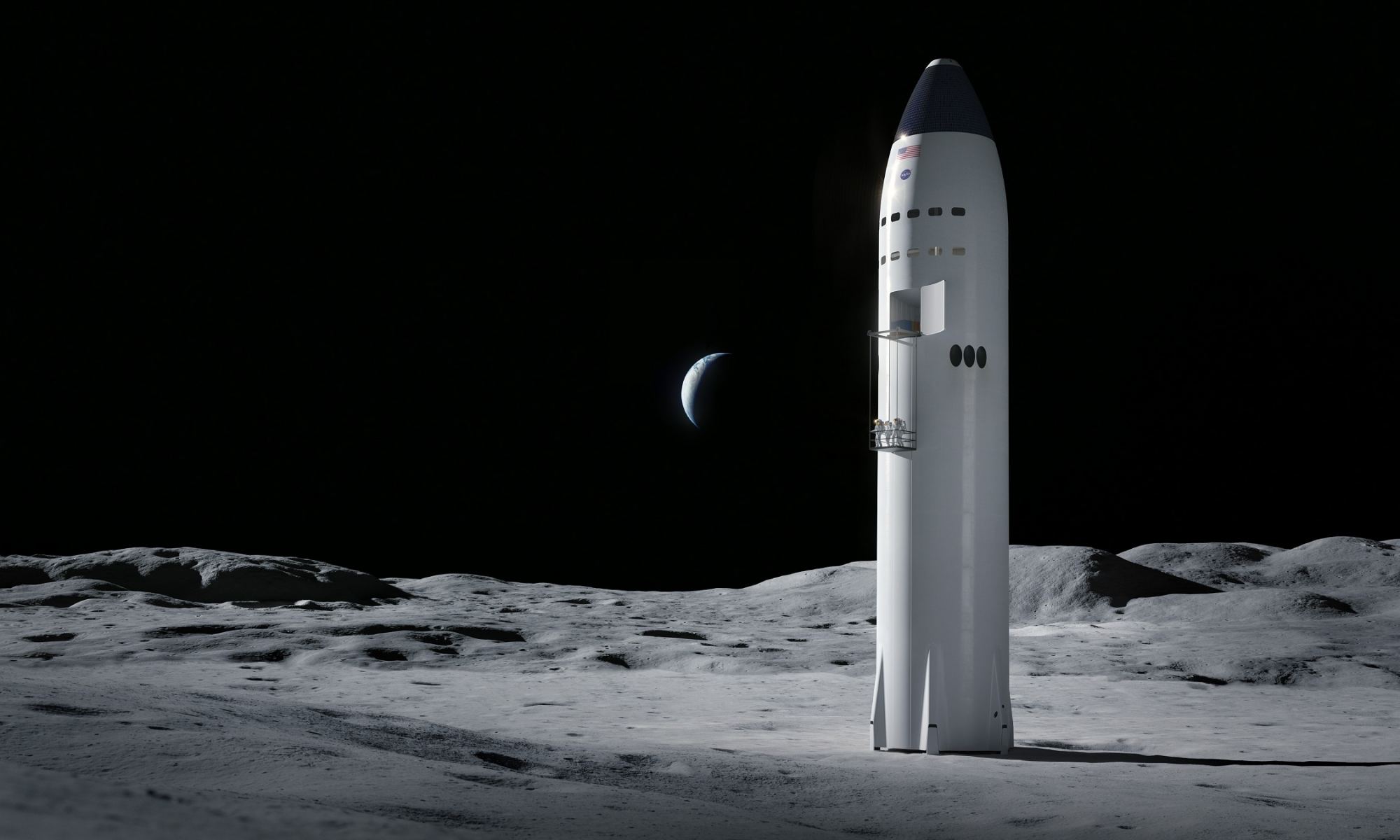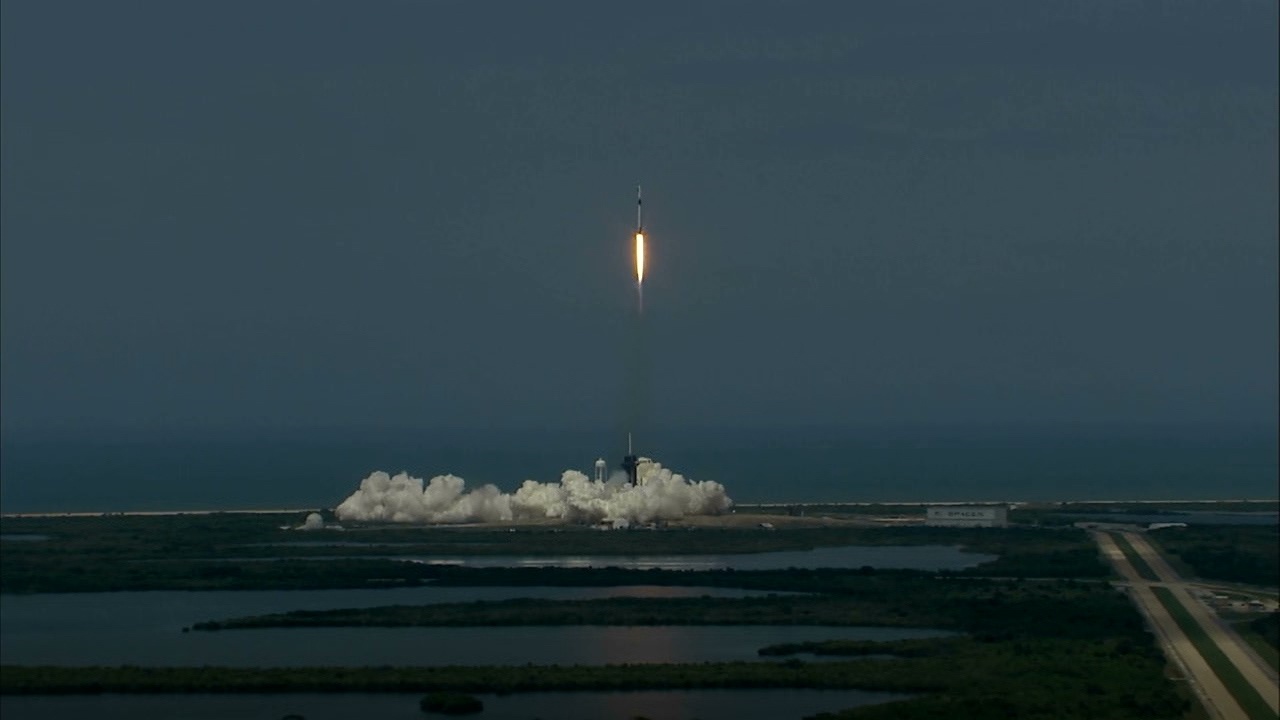SpaceX has done it again! Earlier today (Thurs. Sept. 3rd), the company completed a second hop test with a Starship prototype. This time, it was the sixth iteration (SN6) that successfully made the 150-meter (~500 foot) flight at their launch facility near Boca Chica, Texas. This latest test has further validated the Starship design and the Raptor engine, two systems which Musk hopes will someday take humans to the Moon, to Mars, and beyond!
Continue reading “SpaceX’s Starship Prototype Nails Another Hop Test! Bring on Orbital Flights!”SpaceX is Going to Hop Starship Again This Weekend
With a first successful hop test under their belts using a full-scale prototype, SpaceX is pressing ahead with the testing of the Starship. Tomorrow (on Sunday, August 30th), SpaceX will be attempting to make a second 150 meter (500 ft) hop test, this time with their sixth Starship prototype (SN6). It’s all part of a very busy weekend for SpaceX, with no less than three launches planned.
Continue reading “SpaceX is Going to Hop Starship Again This Weekend”Astronauts Come Back to Earth on August 2nd, Completing the Full Crew Dragon Test
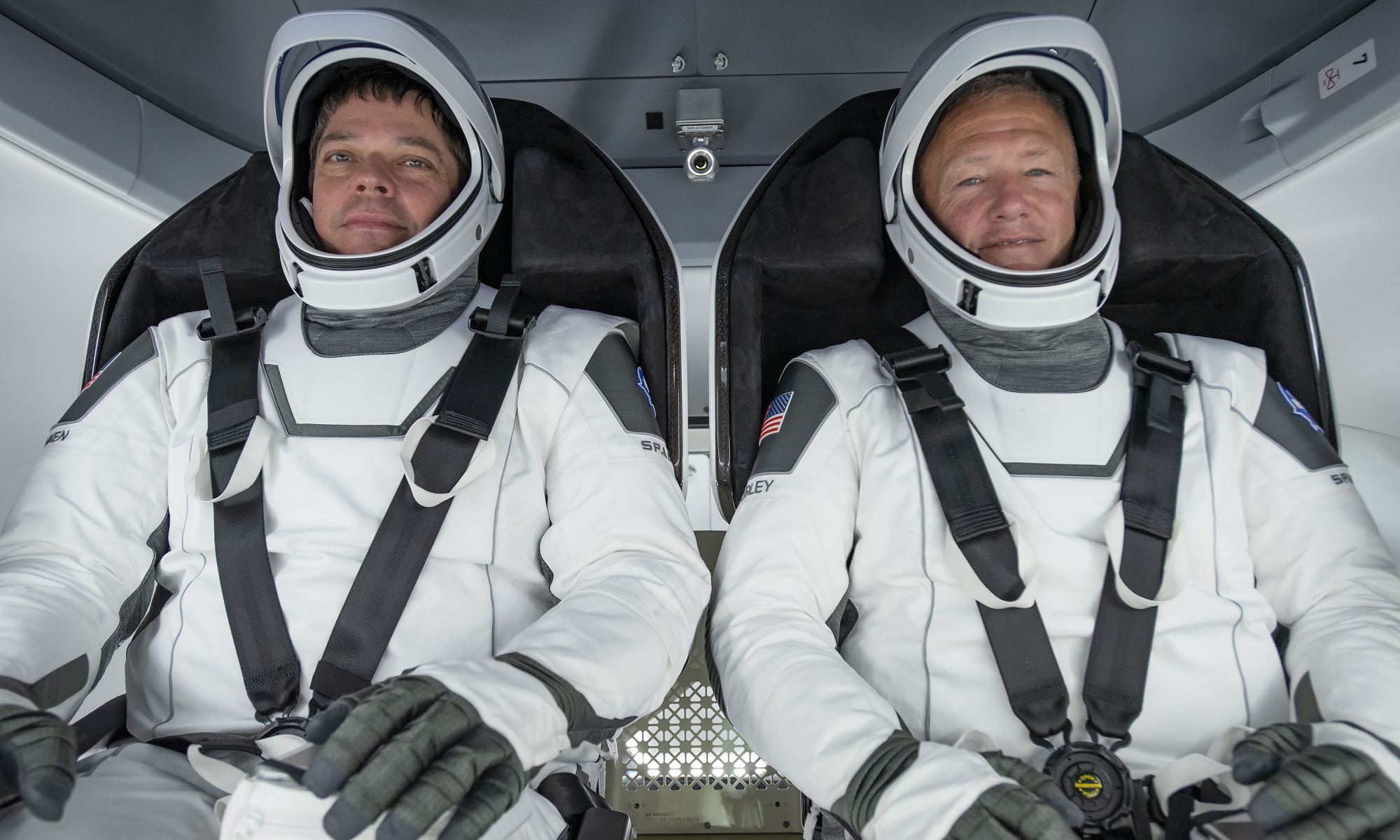
On May 30th, SpaceX and NASA made history when a Crew Dragon spacecraft carrying two astronauts (Robert Behnken and Douglas Hurley) launched atop a Falcon 9 rocket and rendezvoused with the International Space Station (ISS). With this one flight, NASA and SpaceX demonstrated that the US once again has domestic launch capability, something they have not enjoyed since the retirement of the Space Shuttle in 2011.
In one week, Sunday, August 2nd, Robert and Douglas will be returning to Earth using the same Crew Dragon spacecraft (named Endeavour) that took them to the ISS. This is the most crucial part of Demo-2 flight, where the spacecraft is tasked with bringing the astronauts home, safe and sound. As you can imagine, there are a lot of people who are understandably nervous, not the least of which is SpaceX founder Elon Musk.
Continue reading “Astronauts Come Back to Earth on August 2nd, Completing the Full Crew Dragon Test”SpaceX Finally Catches Both Halves of a Falcon 9 Fairing
On July 20th, SpaceX launched a South Korean military communications satellite (ANASIS-II) using the same Falcon 9 that delivered a pair of astronauts to the International Space Station (ISS) back in May. And in another interesting development, this mission was the first time that SpaceX managed to not only retrieve the first stage booster at sea but also retrieved both halves of the payload fairing.
Continue reading “SpaceX Finally Catches Both Halves of a Falcon 9 Fairing”Will We See a Starship Test This Week?
As we speak, engineers at SpaceX’s Boca Chica test facility are busy getting the fifth Starship prototype (SN5) ready. Having recently passed the crucial cryogenic load test, and with the installation of its SN27 Raptor engine, the ground crews are now gearing up for a static fire test. Assuming the SN5 doesn’t explode in a massive fireball (as the SN4 did), it will be ready to make the first hop test of a full-scale Starship prototype.
Continue reading “Will We See a Starship Test This Week?”NASA Changes its Mind. It Will be Using Previously Flown Crew Dragons and Falcon 9
For the purpose of restoring domestic launch capability to US soil, NASA launched the Commercial Crew Program (CCP) in 2010. Alongside its commercial partners, Boeing and SpaceX, the focus of this program has been to develop crew-capable spacecraft that could deliver payloads and astronauts to the International Space Station (ISS), something NASA has been unable to do since the retirement of the Space Shuttle in 2011.
On May 30th, 2020, the CCP fulfilled its purpose as SpaceX’s Crew Dragon spacecraft was launched atop a Falcon 9 rocket and successfully delivered two astronauts (Robert Behnken and Douglas Hurley) to the ISS. Looking ahead, NASA and SpaceX have modified their contract agreement, which gives the company permission to use previously-flown Crew Dragon spacecraft and Falcon 9 boosters to send NASA astronauts to the ISS.
Continue reading “NASA Changes its Mind. It Will be Using Previously Flown Crew Dragons and Falcon 9”How SpaceX is Changing Starship to be Able to Land on the Moon
In May of last year, NASA announced that it had selected 11 aerospace companies to study and produce prototypes for a Human Landing System (HLS). This decision was made as part of Project Artemis and NASA’s commitment to return humans to the Moon by 2024. A year later, the administration shared that they had narrowed the field down to three companies – SpaceX, Blue Origin, and relative newcomer Dynetics.
For their part, SpaceX is working on a modified version of the Starship, the commercial vehicle SpaceX is currently testing at Boca Chica. As an HLS, this spacecraft would be a fully reusable system, and also capable of integrating with the Orion spacecraft and the Lunar Gateway. According to recent statements Musk made on Twitter, the HLS version of the Starship will also have some interesting design features.
Continue reading “How SpaceX is Changing Starship to be Able to Land on the Moon”Once Starship Prototypes are Done Exploding, we could see an Orbital Launch this Year
SpaceX has had a lot of ups and downs lately. On Saturday, May 30th, the company made history when their Crew Dragon spacecraft took off from the NASA Kennedy Space Center, carrying two astronauts to space. But just a day before, SpaceX engineers and ground crews watched their fourth Starship prototype (SN4) explode on its testbed during a static fire test, making it the fourth prototype in a row to be lost.
But according to recent news from a SpaceX engineer and executive, as well as an internal email from Elon Musk to SpaceX employees, it is clear that the company is all-in with the Starship prototype and could conduct an orbital flight before the end of the year. An ambitious goal, but you don’t get to be the head of a company that makes reusability a thing and restores domestic launch capability to US soil by being a pessimist!
Continue reading “Once Starship Prototypes are Done Exploding, we could see an Orbital Launch this Year”NASA and SpaceX Make History with Successful Crew Dragon Launch!
Today, on Saturday, May 30th, NASA and SpaceX successfully launched the Crew Dragon to space with two astronauts for the first time. Far from just a demonstration, this launch signaled the restoration of domestic launch capability to US soil! From this day forward, NASA astronauts will no longer be dependent on foreign launch providers (like Roscosmos) to send astronauts to the International Space Station (ISS).
Continue reading “NASA and SpaceX Make History with Successful Crew Dragon Launch!”SN4, We Hardly Knew You. Another Starship Prototype Lost!
Earlier today (Friday, May 29th), at 01:49 p.m. local time (02:49 p.m. EDT; 11:49 PDT), SpaceX Starship prototype (SN4) exploded on the company’s test pad near Boca Chica, Texas. The explosion occurred two minutes after ground crews commenced a static fire test of its Raptor engine. This test was intended to test the Raptor and the Starship design once more in preparation for a major milestone – a 150 m (500 ft) hop test – this summer.
Continue reading “SN4, We Hardly Knew You. Another Starship Prototype Lost!”
